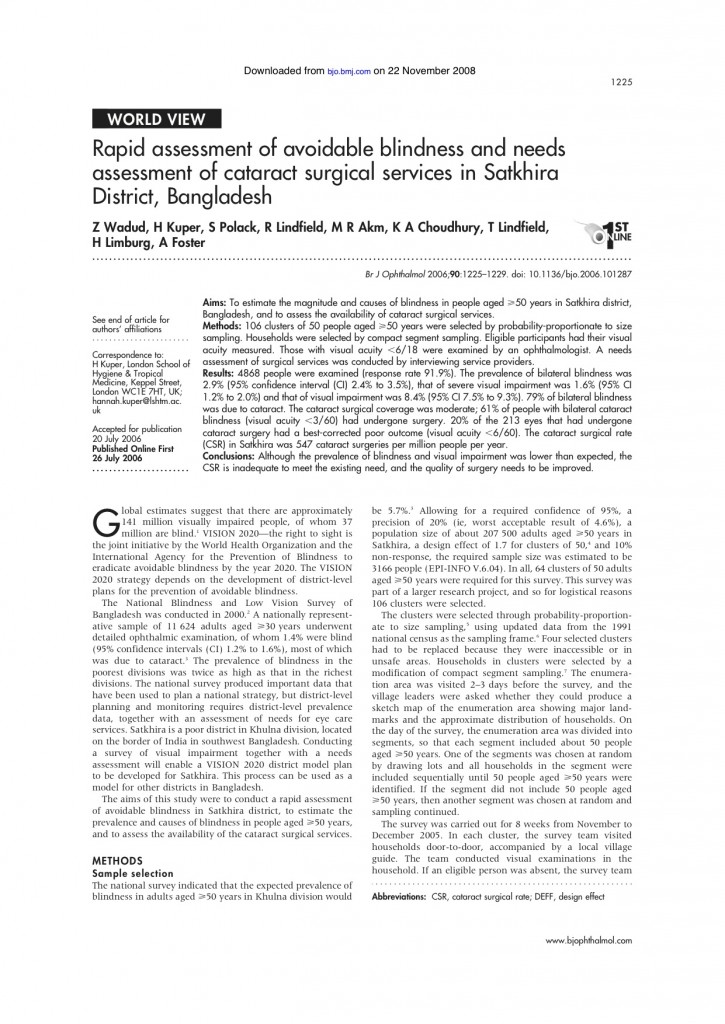Rapid assessment of avoidable blindness and needs assessment of cataract surgical services in Satkhira District, Bangladesh
Z. Wadud1, H. Kuper2, S. Polack2, R. Lindfield3, M. R. Akm4, K. A. Choudhury5, T. Lindfield6, H. Limburg2, A. Foster2
The British Journal of Ophthalmology (2006) 90:10. DOI: 10.1136/bjo.2006.101287
1: Child Sight Foundation, Dhaka, Bangladesh; 2: International Centre for Eye Health, London School of Hygiene & Tropical Medicine, UK; 3: Maidstone & Tunbridge Wells National Health Service Trust, Maidstone Hospital, UK; 4: CSS Rawm Hospital, Khulna, Bangladesh; 5: National Institute of Ophthalmology, Dhaka; 6: Westminster Primary Care Trust, London.
Abstract
To estimate the magnitude and causes of blindness in people aged > or =50 years in Satkhira district, Bangladesh, and to assess the availability of cataract surgical services. 106 clusters of 50 people aged > or =50 years were selected by probability-proportionate to size sampling. Households were selected by compact segment sampling. Eligible participants had their visual acuity measured. Those with visual acuity <6/18 were examined by an ophthalmologist. A needs assessment of surgical services was conducted by interviewing service providers. 4868 people were examined (response rate 91.9%). The prevalence of bilateral blindness was 2.9% (95% confidence interval (CI) 2.4% to 3.5%), that of severe visual impairment was 1.6% (95% CI 1.2% to 2.0%) and that of visual impairment was 8.4% (95% CI 7.5% to 9.3%). 79% of bilateral blindness was due to cataract. The cataract surgical coverage was moderate; 61% of people with bilateral cataract blindness (visual acuity <3/60) had undergone surgery. 20% of the 213 eyes that had undergone cataract surgery had a best-corrected poor outcome (visual acuity <6/60). The cataract surgical rate (CSR) in Satkhira was 547 cataract surgeries per million people per year. Although the prevalence of blindness and visual impairment was lower than expected, the CSR is inadequate to meet the existing need, and the quality of surgery needs to be improved.

